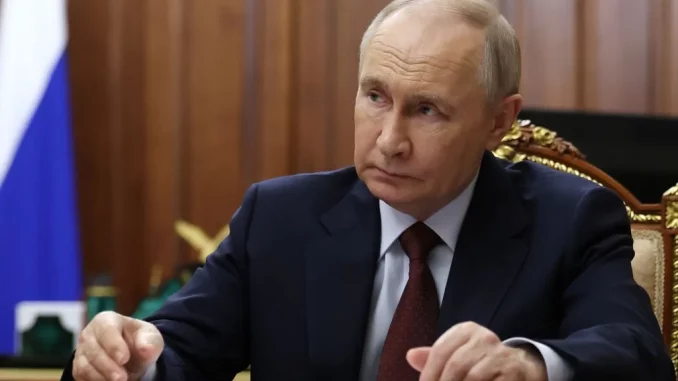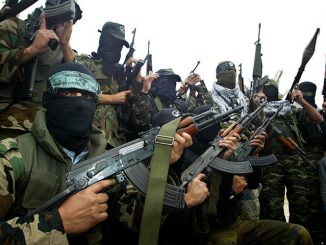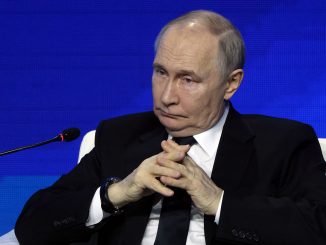
| Published July 21, 2025
Putin Signals Openness to Peace—but Only on Russia’s Terms
As the war in Ukraine grinds into its third year with no end in sight, the Kremlin has once again declared that President Vladimir Putin is “ready” for peace talks. However, the offer comes with a caveat: any agreement must fully align with Russia’s long-standing demands. According to statements from Kremlin spokesman Dmitry Peskov, Moscow remains firm in its pursuit of what it calls “clearly defined goals,” including territorial claims and NATO-related conditions that Kyiv and its Western allies have repeatedly rejected. The renewed call for negotiations comes amid intensified battlefield activity, rising civilian casualties, and mounting international pressure—particularly from the United States, where President Trump has issued a deadline for a ceasefire or face further sanctions. With diplomacy on edge and the stakes escalating, the question remains: is peace truly on the table, or is it just another front in a war of narratives?
🕊️ Kremlin’s Position on Peace Talks
1. Open to peace—but only on Moscow’s terms
-
Kremlin spokesman Dmitry Peskov said President Putin is “ready to discuss peace” and bring the conflict to a settlement “as soon as possible,” but only if Russia’s “goals are clear” and have been achieved.
-
These goals include full Ukrainian withdrawal from Crimea, Kherson, Luhansk, and Donetsk; a formal abandonment of NATO membership aspirations; and military restrictions on Ukraine—all stances Ukraine and its allies have firmly rejected
2. Talks may resume soon—but no ceasefire yet
-
Ukraine has offered to resume peace talks, potentially this week or in Istanbul, following the last rounds on May 16 and June 2, which yielded mainly prisoner swaps .
-
However, the Kremlin stresses no dates have been set, and that real negotiation hinges on Moscow’s “maximalist demands” being met.
3. Military escalation persists
-
Simultaneously, Russia has carried out heavy drone and missile strikes on Kyiv, Kharkiv, Zaporizhzhia, and other cities, causing civilian casualties and infrastructure damage .
-
Ukraine, in turn, is reportedly launching counter-strikes into Russia, including drone attacks near Moscow’s airports.
4. External pressure is mounting
-
U.S. President Trump has issued a 50‑day ultimatum: agree to a ceasefire or face steep new tariffs and increased support for Ukraine (e.g., Patriot missile systems).
-
The EU has introduced further sanctions targeting Russia’s oil-and-gas sector.
 Russian and Ukraine delegations at peace talks in Istanbul, Turkey, on June 2.
Russian and Ukraine delegations at peace talks in Istanbul, Turkey, on June 2.
🇷🇺 Resulting Effects of Russia’s Peace Conditions
1. Stalled Diplomatic Progress
Despite Moscow’s claims of readiness, the insistence on full territorial and strategic concessions has effectively stalled meaningful negotiations. Ukraine views these demands as tantamount to surrender, making talks unlikely to move forward without external intervention or compromise.
2. Intensified Military Strikes
Rather than easing violence, Russia’s peace offer has coincided with renewed aerial assaults on Ukrainian cities. Missiles and drones continue to hit civilian infrastructure in Kyiv, Kharkiv, and Zaporizhzhia, suggesting that Moscow is using force to pressure Ukraine into talks on its terms.
3. Strengthened Western Resolve
Far from weakening Western support for Ukraine, Russia’s hardline stance has triggered fresh pledges of military aid and economic sanctions. The U.S. has threatened new tariffs and increased weapons deliveries unless a ceasefire is reached within 50 days, reinforcing NATO unity.
4. Public Messaging and Global Perception War
Russia’s statement serves as a geopolitical maneuver to portray itself as open to peace, potentially swaying neutral countries or anti-war audiences. Meanwhile, Ukraine and its allies counter that these are not genuine negotiations but demands for unconditional capitulation.
5. Civilian Fatigue and Displacement
Ongoing strikes and instability have worsened the humanitarian crisis. Civilians face blackouts, destroyed homes, and displacement—deepening war fatigue in both Ukraine and parts of Russia. These conditions increase internal pressure but also rally defensive resolve.
6. Emerging Diplomatic Backchannels
While official talks remain deadlocked, third-party states like Turkey, China, or Gulf nations may be exploring informal mediation channels. However, without compromise on core issues, these efforts remain exploratory.
 Overall Takeaway:
Overall Takeaway:
Russia’s latest overture for peace—framed as a willingness to negotiate—reveals more about its unwavering strategic goals than any real shift toward compromise. By tying diplomacy to demands Ukraine cannot accept, the Kremlin ensures the conflict remains locked in a dangerous stalemate. While the West ramps up pressure and Ukraine braces for continued attacks, the prospects for true peace remain distant. In the end, this moment serves less as a breakthrough and more as a stark reminder: until one side alters its conditions or leverage on the battlefield changes, diplomacy will remain a rhetorical weapon rather than a path to resolution.





Be the first to comment